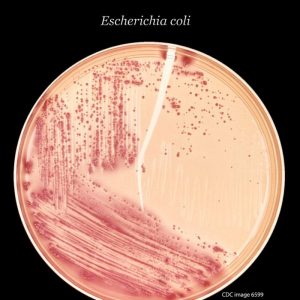New research presented at the Society for General Microbiology’s Annual Meeting showed how E. coli O157:H7 binds with plant cells. This lets the bacterium hold on to the plant’s surface so it can multiply. And that means that washing produce is not going to easily remove this pathogenic bacteria.
 Between 20 to 30% of food poisoning outbreaks are linked to contaminated vegetables. Researchers from the James Hutton Institute in Scotland found that E. coli O157:H7 uses flagella, which are thin appendages usually used for movement, to penetrate the plant cell walls. The flagella interacts with fat molecules in the plant cell membranes.
Between 20 to 30% of food poisoning outbreaks are linked to contaminated vegetables. Researchers from the James Hutton Institute in Scotland found that E. coli O157:H7 uses flagella, which are thin appendages usually used for movement, to penetrate the plant cell walls. The flagella interacts with fat molecules in the plant cell membranes.
Once they are attached, the E. coli bacteria colonize the plant’s surface. Most of the bacteria can be removed by washing at this point, but some can invade and get inside the plant, where they are not removed by washing. E. coli O157:H7 can colonize the roots of spinach and lettuce. That means the bacteria aren’t just transported through the food chain, but that they interact with plants and animals.
The research leader, Dr. Nicola Holden, said, “this work shows the fine detail of how the bacteria bind to plants. We think this mechanism is common to many food-borne bacteria and shows that they can exploit common factors found in both plants and animals to help them grow. Our long term aim is to better understand these interactions so we can reduce the risk of food-borne illness.”




